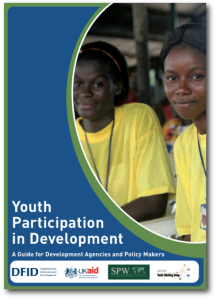 [Summary: Some initial reflections on the release and reporting of COINS government spending data]
[Summary: Some initial reflections on the release and reporting of COINS government spending data]
The last week has seen big moves in the opening up of Government data, with the release today of the COINS database of government spending.
Since it was released at 9.30 this morning there has been buzz of activity trying to clean the raw data up into usable forms (see the Open Knowledge Foundation and Guardian interfaces to exploring the COINS data) and I think it’s certainly fair to say that the race to create ways to explore the data has generated some impressive results – leading to tools beyond what may have been created by an internal government process to present the same data in user-friendly forms. We’re learning a lot right now about the potential of crowd-sourced collaborations between government and other groups. And thanks to the development of good ways to explore the data, it is already providing the basis for news stories on government spending… and this is where we’ve still got a lot to learn.
Responsible Reporting
Neither the Guardian (disappointingly), nor the Daily Mail (unsurprisingly), in reporting that government spend £1.8bn on consultants last year, give an account of how this figure was derived. Transparency can’t be for government alone.
It does not seem to be too much to ask that the reports give an account of how this data was derived, given they can very easily link to the raw data itself. The £1.8bn Consultancy Spend story is interesting. But without knowing what categories of codes from COINS were used to generate that figure – I’ve no way of using the transparency of the government data to explore that finding more for myself.
Interestingly, this may also fall foul of the terms under which the data is available: ‘Crown Copyright with Data.gov.uk Rights‘. This requires attribution of the data ‘in the form the data provider specifies, or otherwise “Contains [insert name of Data Provider] data © Crown copyright and database right” and requires that users “do not misrepresent the Data or its source”.
As government develops new conventions for transparency – it would be good to see new conventions from mediators between data and the public too. Perhaps data.gov.uk should be clearer about attribution – and suggest that attribution should involve a clear link back to the dataset. If that was combined with some of the points Paul Clarke noted (and my comment on that post picks up on) around improving the user-friendly nature of data-stores, then simple steps might move us closer to ensuring transparency builds effective public debate – weaving data into the information.
Transparency in government means more than just chance for government. And that’s important for advocates of open data and an open society not to loose sight of…


 If you’ve looked at any sites such as Data.gov.uk or the London Datastore website, where you can browse and access datasets recently released by government, then I need your help.
If you’ve looked at any sites such as Data.gov.uk or the London Datastore website, where you can browse and access datasets recently released by government, then I need your help.
 I’ve been dealing with quite a few local authority finance departments over the last few weeks as bookings have been coming in for the
I’ve been dealing with quite a few local authority finance departments over the last few weeks as bookings have been coming in for the 
